It's a good year for the roses!
Tips from the experts on how to treat black spot...
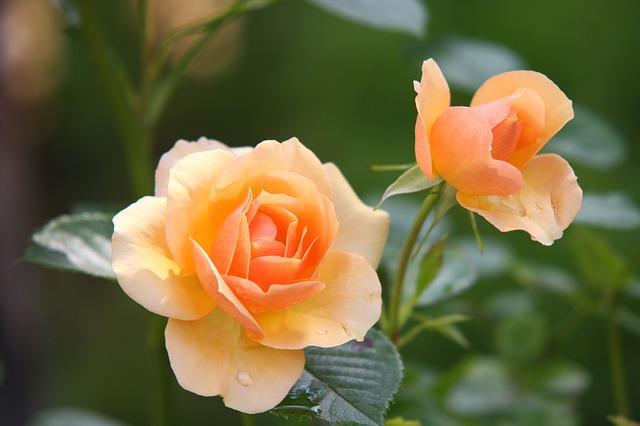 I recently went to the Gardeners’ World exhibition in Birmingham. It was less slick than Chelsea, with fewer gardens to look at, but the plant stalls were manned by experts happy to give advice; there were talks by Alan Tichmarsh and Carol Klein to name just two, and there weren’t masses of people so you could mooch about quite happily and not feel you were holding people up. So all in all it was a very relaxing day. I’d recommend it to anyone who doesn’t like throngs of people but enjoys gardening.
I recently went to the Gardeners’ World exhibition in Birmingham. It was less slick than Chelsea, with fewer gardens to look at, but the plant stalls were manned by experts happy to give advice; there were talks by Alan Tichmarsh and Carol Klein to name just two, and there weren’t masses of people so you could mooch about quite happily and not feel you were holding people up. So all in all it was a very relaxing day. I’d recommend it to anyone who doesn’t like throngs of people but enjoys gardening.
Because the atmosphere was so relaxed I was able to talk to the plant specialists manning their stalls. Like most people involved in horticulture they were happy to pass on their expertise, and inevitably at the rose stand we ended up chatting about that all prevailing problem of black spot.
What does black spot look like?
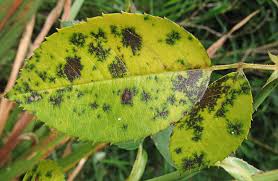
In case you don’t know what black spot is, it is easy to identify.
It first makes its appearance in spring, and as the name suggests, it manifests itself as black spots with fringed edges. These initially develop on the upper side of the leaves. The leaves can then turn yellow and may eventually drop off. There can also be raised reddish purple spots or black lesions on the young stems of the roses. Initially the lower leaves of the plant are affected, but it can spread up the plant and lead to the defoliation and eventual weakening or death of the plant.
What causes black spot?
It is caused by a fungus, Diplocarpon rosae. This fungus produces spores during wet conditions. Apparently the spores need 7 hours continuous rain with temperatures of 24 degrees Celsius for the spores to sprout. So this spring the warm, moist, humid conditions have been ideal for the fungus to get the upper hand.
The spread of black spot
The spores are spread by the wind, rain droplets, or rain splash. They can also be carried on hands, clothing or tools. And unfortunately for us, this fungus is very quick at mutating, and therefore producing new strains. This means that any new roses that have been bred to withstand black spot will eventually succumb to it, as they will not be resistant to the new strains that develop.
So what can we do?
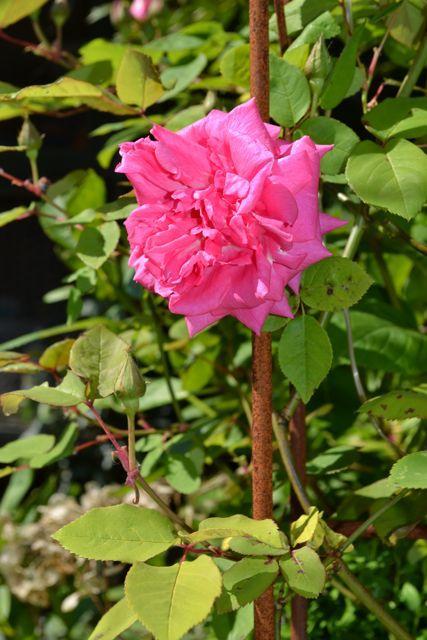 The organic approach to controlling black spot
The organic approach to controlling black spot
For those of us who don’t like using chemicals it is worth looking at the life cycle of this fungus. During the winter the spores rest on the leaves of the roses, plus the young stems and buds. Therefore, it is important to remove all infected leaves.
What to do in spring
Cut any infected leaves off as soon as they appear in spring and collect any infected leaves that fall on the ground. I burn them rather than put them in the compost where they can easily re-infect the soil. Also in spring prune out any young infected stems and again burn. As the spores are so ubiquitous it is probably not worth disinfecting your secateurs each time you do this job as this alone is not going to stop the spread of the disease.
Because the spores need damp weather to mature, it is also worth pruning out the central shoots of the bushes to allow the air to circulate around the plant and so dry the surrounding atmosphere. For the same reason, don’t plant roses too close together, and choose a nice sunny, well drained site.
If you do want to use an organic spray, begin in spring when the black spot first appears. Once the spores get established it takes 3 -10 days for the spots to appear. From then on spores are produced every 3 weeks. It is therefore important to spray regularly.
Organic sprays
Sulphur has often been used as a way of reducing fungal problems on plants, and it is known to be honey bee safe. Just make sure you don’t inhale the dust or fumes. Plus it has to be reapplied after rain as it is easily washed away.
Baking Soda and vinegar changes the pH of the fungus and so kills it. You can make up a mixture of:
- 1 ½ tbs baking soda
- 2tbs veg oil
- 1 ½ tbs liquid soap
- 1tbs vinegar added to a gallon of water. Spray the leaves every 6-7 days.
Milk and water also changes the fungus pH. Use 1 part milk to 2 parts water and spray weekly.
Neem oil is supposed to prevent the formation of spores, but be careful not to spray leaves that are exposed to the midday sun as it can burn the leaves.
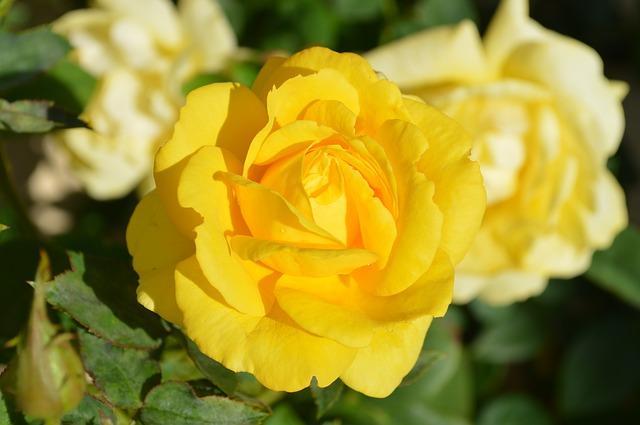 During the summer
During the summer
Keep feeding the roses so they have the strength to fight the disease. And be careful if you need to water your roses. Because we want to avoid a damp atmosphere around the plant, apply the water to the soil, not the leaves. And water in the morning so the plants have all day to dry.
In autumn
Pick up and burn any infected leaves and then mulch the plant with manure. This is in the hope that any rain that splashes back onto the new spring growth will not be infected with the spores present in the soil.
I have been following this regime in one of my clients’ gardens where their small climber is prone to black spot. So far after 16 years it is still surviving.
Non organic methods of controlling black spot.
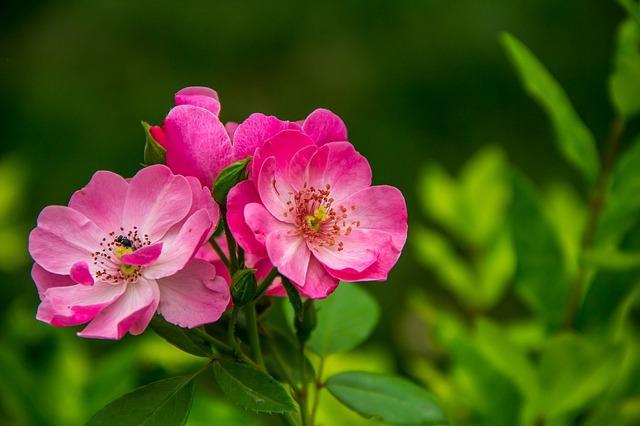 Which Magazine did a survey on best chemicals to use to fight black spot. Their results showed that any product with the active ingredient Myclobutanil or Triticonazole didn’t stop the disease, but it did help to slow down its advances and so kept the rose looking healthy.
Which Magazine did a survey on best chemicals to use to fight black spot. Their results showed that any product with the active ingredient Myclobutanil or Triticonazole didn’t stop the disease, but it did help to slow down its advances and so kept the rose looking healthy.
These are both fungicides and, as we discussed, black spot is good at mutating. It is therefore advisable to alternate these products, otherwise the spores build up a resistance to them. You could also alternate with the protectant Mancozeb to prevent this resistance.
If you are worried about honey bees don’t use any sprays that also have the pesticide Cyerinethrin in them.
So good luck in the fight against black spot. I know I will keep fighting because for me the scent of roses is a must in my garden. I have an arch which is surrounded with Rosa Zephirine Drouhin. This is a climbing bourbon rose which as well as being thornless has the most beautiful scent imaginable. Unfortunately, it is also a magnet for black spot. But without them and the other roses in the garden, my enjoyment of the garden would be diminished. Naturally I would like to win this fight, but as with all things with nature, I’ll just have to come to a compromise.
Debby Lockey

